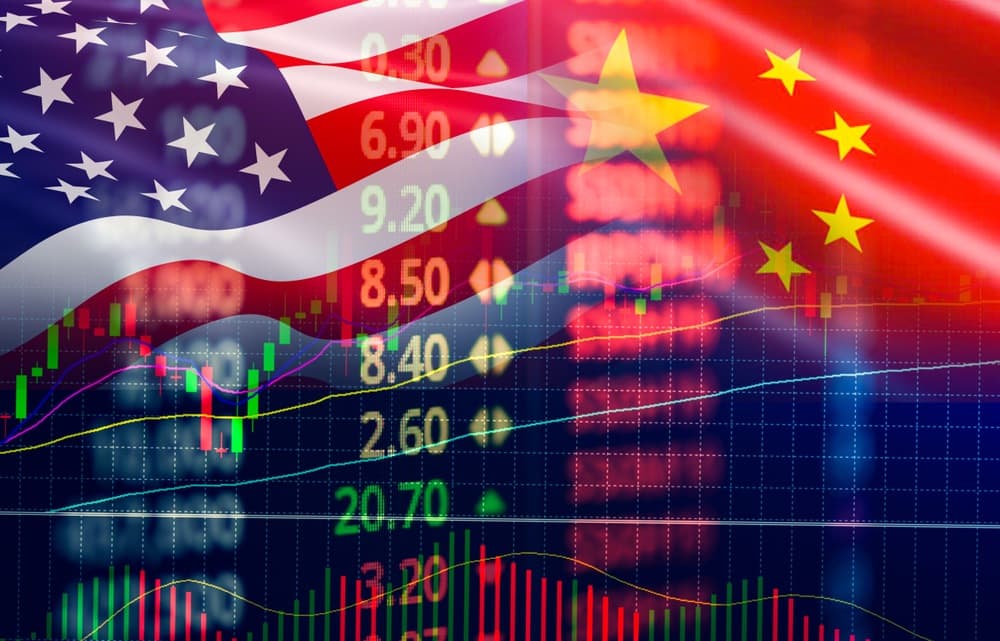
“It’s important to remember how fortunate we are as a country to have a currency and a bond market that is seen in every way as a source of strength and it’s a huge responsibility for us to keep it that way.”
–Laurence Summers
April 23, 2025 — As you know, the uncertainty surrounding President Trump’s reciprocal tariffs sent the stock market plunging earlier this month. Everyone was watching that.
But here’s what most people, glued to the stock market ticker, missed…
It wasn’t just equities that got hit. The bond market started crashing too.
And that’s not exactly… normal.
You see, normally, when markets panic, investors flock to U.S. Treasuries for safety. Bond prices go up, yields fall, and the dollar strengthens. This time, none of that happened. In fact, the bond market had its worst week in decades.
This hasn’t gone unnoticed by BlackRock Co-Founder Ralph Schlosstein, who recently had this to say about the situation:
What’s very different here is normally when stocks go down as much as they have, there’s a flight to quality. And quality becomes defined as U.S. treasuries and the U.S. dollar. In this particular downdraft in the market, we’re seeing treasury yields go up and the dollar weaken. That’s kind of an alarming trend to me—that’s flashing yellow, that something is going on here more than just deleveraging.
Okay, so it’s unusual—but why is that a problem, you may be wondering?
Well, it’s because bonds play a critical role in setting interest rates and determining how much it costs us to borrow money.
Now, you might be thinking: isn’t that the Federal Reserve’s job? Yes—but only partly.
The Fed sets short-term rates, like the overnight lending rate between banks and the federal funds rate. But long-term rates—like those tied to the 10-year Treasury — are determined by the market, driven by buyers and sellers.
So what happens when bonds get sold off?
Interest rates rise — because bond prices and yields move inversely (the lower the bond price, the higher the yield — and vice versa).
Here’s a quick example: if a bond pays you $50 a year and it’s worth $1,000, the yield is 5%. But if that bond drops to $900, you’re still getting $50 — so now the yield jumps to 5.5%. That’s what they mean when they say yields are going up: prices are falling because someone’s selling.
Now imagine someone dumping hundreds of billions in Treasuries. That kind of selling pushes yields even higher. And that’s exactly what we’re seeing right now.
This matters — a lot. For one, rising yields make it more expensive for the U.S. government to borrow.
Think about it: why would anyone buy lower-yielding debt from the government when higher-yield options are readily available on the secondary market? To attract buyers, the government has to match—or even beat—those yields when issuing new debt. Otherwise, no one buys.
With $36.8 trillion in national debt and interest payments already exceeding what the U.S. spends on the military, this isn’t just inconvenient—it’s dangerous. It can start to break things in the economy.
Who’s Dumping U.S. Debt?
There’s a popular narrative going around that China is dumping U.S. Treasuries in retaliation for Trump’s tariffs — a kind of financial nuke.
And yes, China has been gradually pulling back for years — at least since 2013–2014. By the end of 2024, their holdings had fallen to around $760 billion, the lowest level since 2009.
But here’s the thing.
Even though China is clearly diversifying away from U.S. debt, it’s not in their interest to dump Treasuries aggressively. Doing so would hammer the dollar — and send the yuan soaring. That’s the last thing Beijing wants, especially after getting slapped with 145% tariffs on all Chinese imports. A stronger yuan would only make their exports even less competitive.
If I had to guess, the biggest seller in the Treasury market earlier this month wasn’t China. It was probably Japan — America’s ally and the number one foreign holder of U.S. debt (see chart below).

We don’t have the data for April yet — obviously — but Japan isn’t exactly allergic to dumping U.S. debt, having sold $27.3 billion in Treasuries in December 2024 (versus China, which sold “only” $9.6 billion in the same month).
Cause and Effect
President Trump’s team doesn’t just want a weaker dollar — they want a dollar that’s radically devalued against every other currency on Earth. It’s part of their broader strategy to boost U.S. exports and bring manufacturing back home.
But they absolutely don’t want a dysfunctional bond market. That’s how you get 2008 again.
So they’re trying to thread more carefully now.
I’d bet that was one of the main reasons — if not the reason — Trump suddenly hit pause on the reciprocal tariffs for 90 days, despite initially brushing off the idea.
That’s not to say there’s some coordinated effort by U.S. trading partners — friend or foe — to undermine America’s ability to borrow.
No, in a high-tariff environment, this is just how the system responds.
Think about it.
If you’re a country that trades with the U.S., you need dollars. But you don’t hold stacks of physical cash — you hold U.S. Treasuries.
Now, if tariffs reduce trade, countries need fewer dollars. And if they need fewer dollars, they sell Treasuries — which, once again, drives down bond prices and pushes yields higher.
So the next big question is: what happens if Japan, China, and potentially other countries keep selling?
Well, a few things could happen — and none of them are great.
Interest rates could rise even more, making everything from mortgages to car loans more expensive. And if the pressure gets high enough, the Fed will do what it’s done before: step in and buy Treasuries to keep the market from cracking.
Call it QE 2.0. We’ve seen this movie before. It ends with bubbles, bailouts, and a bigger bill down the road.
Regards,
Lau Vegys
Doug Casey’s Crisis Investing and Grey Swan
P.S. from Addison: We’ve been quietly tracking the rise of parallel payment networks cropping up like economic black markets — beyond the reach of SWIFT, beyond the grasp of Western sanctions.
Russia and China, are seeking an Axis of Transactional Convenience, and have stitched together a “netting” system so efficient it’s shaving payment commissions down to a hair above barter.
All thanks to the twin blessings of U.S. tariffs and financial ostracization. It’s almost poetic — Washington’s economic cudgel is forging the very instruments of its decline.
Necessity may be the mother of non-dollar settlements.
If you’re interested in building your own personal “gold standard” outside the dollar, may we suggest you begin by reviewing last week’s Grey Swan Live! with Glintpay.com CEO Jason Cozens, right here. A number of your fellow fraternity members have already expressed interest.
P.P.S: And if you are a paid member of the Grey Swan Investment Fraternity, you can join us for a live discussion tomorrow, April 24, 2025, at 11 a.m. ET.
We’ll be analyzing the commodity space as a whole with Grey Swan Investment Fraternity contributor Shad Marquitz. We’ll run the gamut – gold, natural gas, uranium, thorium, rare earths – you name it. Many commodities are a buy given tariffs and supply chain issues they’re causing. This one’s a can’t-miss call for members.
You can sign up here to become a member.
Add your thoughts to the mix here: addison@greyswanfraternity.com



